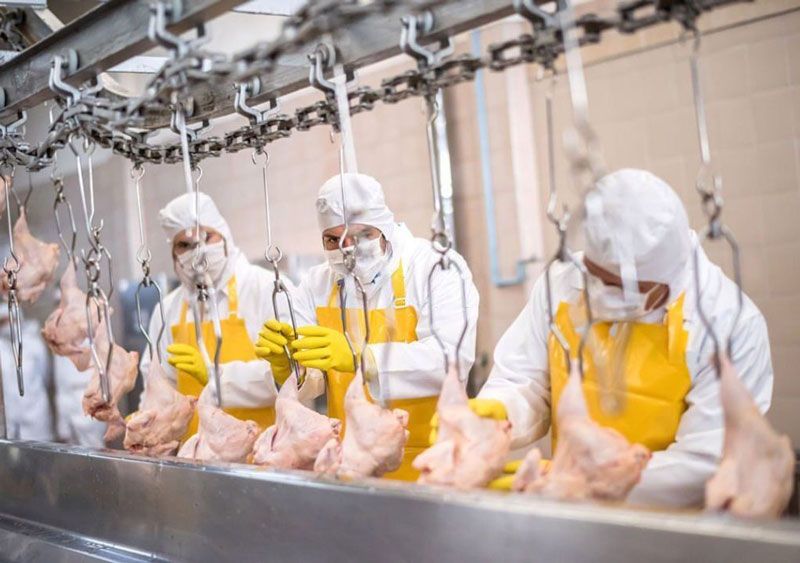
Buyer Guide for Poultry Processing Equipment

Buyer Guide for Poultry Processing Equipment
Poultry processing is a procedure of preparing meat from different types of birds which is consumed by humans. Turkeys and chicken are the most popular form of poultry. However, other profitable poultry meats that are available come from geese, ducks, pheasants, quails, pigeons, emus, and ostriches.
So now you have thought to upraise and process your chicken meat, the research is done, and you know how the perfect broiler is raised. Now you are getting ready for poultry processing day. It is necessary to be prepared and to get ready all the processing equipment before butchering.
You will focus more on how to handle your chickens when all the equipment and tools are already prepared.
Fresh Water for Poultry Processing
We will discuss other equipment later, but the first thing you need is to have access to water. Some individuals are okay with buckets of water passed to the procession station, but it is more convenient to set up your station right next to a running water source.
- Water will be used for four things:
- Washing and cleaning your hands, tools, knives, and the birds.
- Scalding of the birds, that is, if you are defeathering birds by using a scalder.
- Water is also used to run a plucker, like if you are going to use an automatic plucker.
In washing the carcass, if you de-feathered the bird and then sock in it, you move to the next bird. This process is done to make them cool after scalding is done and later store all of them while working on the remaining flock.
So, make your best efforts to get close to a clean water source. It should also be drinkable water, either from a private well or from city water. It must not be water crossed over a garden hose, as they are considered inappropriate for food processing methods.
Ice
The ice will be used to cool and chill the birds, and you might use it to regulate the temperature of the scalder. At your processing station, you may place it in a cooler.
Soap and Disinfectant
You will need soap and disinfectant to wash all the areas where you have done the processing of chicken. This step will ensure the protection of the health and safety of meat consumers.
Moreover, it is good to use soaps and sanitizers to wash up and clean between chickens, particularly when you encounter unhealthy chicken that is non-consumable.
You have to be careful when cutting internal parts of your chicken as you process the birds. If the organs are cut accidentally, the meat will be contaminated. So, in order to avoid such mishaps, make sure to wash your hands and clean your tools between birds.
Sterilizing Equipment
You can buy sterilizing machines, or you can also sterilize your equipment or tools yourself. It is convenient to have a sterilizer on hand if you contact any unhealthy bird.
Bags, Buckets, and Trash Bins
If you have a large flock, it will be better to have access to more trash bags, bins, and buckets. These things are beneficial for catching the blood and keeping the area clean when draining it.
Poultry Processing Cones
Poultry processing cones are very helpful when cutting the carotid artery or beheading the chicken because they make handling easier by holding the chicken in place when dispatching. It also helps in providing an area to put the carcass. The blood drains out from the body at the same time.
Dispatching Aids for Poultry Processing
There are a few options to study what you use to dispatch your chicken:
Hatchet and Block
In this case, you will put the chicken neck between two nails precisely placed on the chopping block and then remove the head from the body. This process is called the beheading method.
Cone and Poultry Killing Knife
If you chose to cut chickens’ throats, you would need a sharp knife for chicken processing. For this method, ensure proper knife sharpers if you are processing a larger flock.
Broomstick Method
The broomstick is used as a process of breaking the chicken’s neck. It can be done by using a hand or with the help of a broomstick.
Co2 Chamber
This method requires a Co2 chamber, gas, and patience for chicken processing.
Pellet Gun
Pellet gun creates stress for the chicken that causes hormone flow and results in hard meat. It is essential to keep your chicken calm and maintain quality meat.
Poultry processing machinery is widely used in many chicken processing sectors. It depends on personal preference whether to choose any of the above methods or tools for processing the chicken.
FAQ
How much does poultry processing equipment cost?
The cost of poultry processing equipment can vary depending on the particular machine. However, the average cost of a poultry processing machine is around $10,000.
What are the benefits of using poultry processing equipment?
The benefits of using poultry processing equipment include faster and more efficient production, decreased labor costs, and increased safety.
What are the most common poultry processing problems?
The most common poultry processing problems are improper chilling, improper sanitizing, and contamination by harmful bacteria and viruses.
